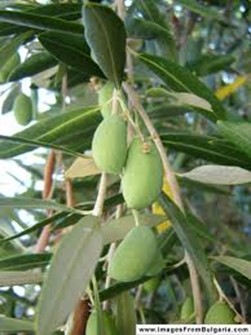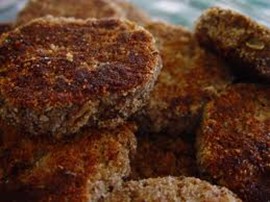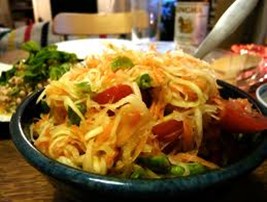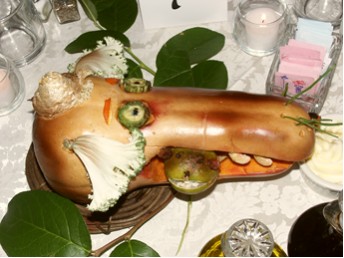Right after I told you about the untested and possibly harmful brominated vegetable oil (yesterday!) I got a press release from Center for Science in the Public Interest saying that PepsiCo has decided to take BVO out of its popular drink Gatorade. Wonder if Susan Kavanagh’s petition had anything to do with it? Congratulations to her, either way.
In a well-deserved cultural change, the work of farming has (re)gained the respect we owe to those who literally keep us alive. And farming doesn’t seem as distant as it once did. Urban farming has been catching on for a decade or more, in cities and towns across the country. Rooftops, back yards, and patches of public land are now producing fruits and vegetables. Having made small attempts to grow tomatoes and legumes, I can attest that there’s a wealth of knowledge required, as well as patience and resilience.
The consistent boom in the organic food marketplace has been another source of interest in farming. Unlike the huge industrial growing establishments that douse land with pesticides (and all those other chemicals you know about), organic fruits and vegetables are often grown in small family farms, and journalists have in the last decade profiled numerous creative individuals and couples who are growing organically. The local food movement is a third ray in the spotlight of attention farmers are now getting, as we meet growers at farmers’ markets and roadside stands.
If you want to become a farmer, there are many helpful resources, for instance on the USDA website. Go here to read about what Christopher Weber calls “farm incubators” – university extensions, government programs, and non-profit organizations that train and support young people and also immigrants who were farmers in their countries of origin.
Weber calls his article “Boot Camp for Farmers” and the wordplay is quite appropriate. As I’ve reported before, returning war veterans are finding that farming is an open economic niche – quite a welcome change from the difficulty many of them have in finding post-military jobs. Beth Buczynski highlights a program called Veterans Sustainable Agriculture Training (VSAT), where vets can learn a new career and find healing in the rhythm of the land. It’s no accident that the ancient term for peace-making is ”turning swords into plowshares.”
Dear friends,
Please accept this as a belated holiday gift! My niece forwarded this recipe to me, which was very thoughtful, since she is a carnivore. Surely one of the best ways we can welcome our carnivore friends and family to the world of compassionate eating is to tempt them with such delicious and versatile dishes.
Quinoa patties
Cook 1 1/2 cups quinoa in 3 cups water with 1/2 tsp salt for 25 -30 minutes.
Place in a large bowl and add:
1 cup seasoned bread crumbs (whole grain if you have them)
1/2 cup parmesan cheese
1/2 tsp salt
4 large organic genuinely free-range eggs (or ½ cup mashed silken tofu)
1 medium onion very finely minced
1-2 cloves garlic minced (optional)
1/3 cup chopped chives (chopped green onions also work)
Mix together well. In a non-stick skillet heat 1 tbsp olive oil to low medium heat.
With wet hand place, about 1/3 to 1/2 cup of mix in pan and lightly flatten into cake to about 1/2 inch thick. Fry till golden brown, then flip and do the same on second side. Heat may need to be turned down as pan gets hot. Take off heat while adding additional patties to avoid burning.
These can be refrigerated and microwaved when needed. At room temperature, they make good snacking, too, as my carnivore husband showed me.
If you know the author of this recipe, please let the rest of us know, so we can send to him or her some appreciation and fame!
A friend treated me to dinner at a restaurant she loves in Santa Rosa, enticing me with praise of all the things the owner was doing to meet the highest standards of health for person and planet. So after my author appearance at the Sonoma County Book Festival, we went to a place called Goji Kitchen. On the menu you can find a wide range of offerings, including meat dishes, but best of all, lots of vegetarian and vegan options. So there was gold star number one – going meatless is the best thing you can do for the planet.
The owner is named Kim Chi (not to be confused with the spicy Korean sauerkraut), who described one unusual and surprising cooking choice. She never uses a microwave, believing that microwaves damage the nutritional qualities of foods heated in them. This decision to forego one of modernity’s handiest inventions is impressive, given the complexities of serving numerous dishes hot over a meal time that might last hours. Instead, she uses a steaming chamber.
Another innovation was something called Nordaq Fresh, a device that purifies water on site to a high standard. Thomas Keller of the French Laundry restaurant uses it, too. I personally couldn’t tell a taste difference, but these days we need all the purity we can get! Kim Chi also spoke knowledgeably about gluten sensitivities, the aflatoxin in peanuts (which is why she uses almonds for a garnish), and more.
So if you’re looking for a restaurant where you can trust that the owner/chef is committed to health of people and planet, here is one in Santa Rosa I recommend that you visit. Goji Kitchen, 1965 Mendocino Avenue, Santa Rosa, 95401 (707) 523 3888.
Not long ago (March 13), I praised the possibility of eating one’s packaging – namely, the natural kind, such as the skin of apples and other fruits, or the created kind, like ice cream cones. Created edible packaging (in the form of plastic-like films made from tomatoes and what not) has been in the pipeline for years, but this week on a Grist post I found that someone had taken this to a delightful extreme and invented an espresso coffee cup made out of a cookie. Go here for the photo.
There’s also a wonderful book called Play With Your Food by Saxton Freymann and Joost Elffers that shows you how to turn fresh fruits and vegetables into marvelous little sculptures. I loved this book so much that I got a friend to use this inspiration to make centerpieces at my wedding. You can see one in this post. This isn’t exactly sustainable eating, but let’s stretch a point and call it good food anyway. Nine years later, my friends and family still mention those centerpieces!
Happily, the book has a sequel, Food Play, with even more vegetable magic. Food is often a serious topic (I plead guilty) but there’s nothing wrong with letting out the innocence and playfulness of childhood sometimes. In a future post, I’ll share some of the other neat foodplay ideas and websites I’ve come across.
A few weeks ago, Audubon California conservation biologist Monica Iglecia got her 15 minutes of fame – she was written up in two news stories that were highlighted in the week’s Bureau of Land Management newsletter. The first appeared in the AppealDemocrat, the local newspaper of Sutter and Yuba counties, and described her visit to a California rice farm. If you have images of rice paddies covered by inches of water, you’re on the right track. Rice does require a lot of water to grow, and California has half a million acres devoted to growing rice.
Where do birds come in to this picture? So many acres of wetlands have been filled in and converted to human use that migratory birds can have a tough time finding places to stay over during their migrations. Solution: get rice farmers to make their fields more hospitable to our flying friends. Turns out this is eminently doable, and the Migratory Bird Conservation Partnership is making it happen. Said Ms. Iglecia, “That’s exciting when you see chicks because you know the nesting efforts are working.”
One thing rice farmers can do is flatten the tops of their water-retaining levees, so birds can find a place to build nests. Another is to leave grass and weeds at the fields’ borders, instead of pulling them out, thus providing bird habitat. For a great photo, go here.
Ms. Iglecia was also interviewed by an AP reporter and the two saw an avocet nest on top of such a levee. “It’s a full clutch of four eggs,” said Monica Iglecia, a shorebird biologist with Audubon California, looking through binoculars. “This is why we do this work. It’s exciting to see.”
Let’s hope that soon all these wonderful partners will create a “bird-friendly” label for rice packages, so we can seek out rice from growers that are hospitable to the birds that pass through our state.







